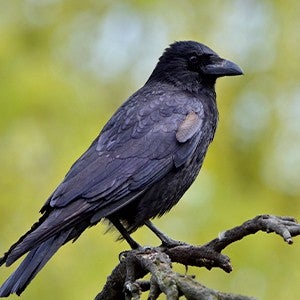The woodland phloxes bring the heavenly scents of spring, and the fireflies bring the sparkling lights of summer. Even in the depths of winter, cardinals, white-throated sparrows, northern flickers, mourning doves and squirrels bring all the music and entertainment we could ever need—right in front of our home.
Orchestrating this sensory extravaganza from above and below is our beloved silver maple. Formerly alone in a sea of turfgrass, the tree is now the most gracious host in our habitat throughout the year, offering birds and other wildlife a ground layer of seed and insect snacks as well as a cozy bed of fallen leaves and rich soil.
It wasn’t always party central in our front yard. But when my husband and I stopped mowing around the tree, word got out to the local feathered and furry jet-setters that this was the place to be. As the space filled in with native plants and the plants shed their leaves and twigs, we left everything in place, certain that someone would make good use of it all.
But the transition period from grass to viable habitat is akin to the awkward teenage phase, looking a little rangy while searching for an identity. When visitors asked what I was doing, it was hard to explain in a digestible way. “Planting for wildlife” has a nice ring to it, but “leaving all the dead stuff possible” is more likely to garner a few sideways glances.
Enter “Soft Landings,” a concept created by Neighborhood Greening founder Leslie Pilgrim and pollinator expert and author Heather Holm. Both based in Minnesota’s Twin Cities, Pilgrim and Holm wanted to fill in a knowledge gap: Though many people recognize the critical role of live native plants in the food web, few know that animals need a rich layer of dead leaves and healthy soil to complete their life cycles.
Creating soft landings around young saplings isn’t difficult, but replacing turf around mature trees like my maple takes time and patience.
Pilgrim was struck by the discrepancy when she watched a talk by entomologist Doug Tallamy, who showed a photo of an oak tree surrounded by lawn. Oaks feed caterpillars of many moth species; those caterpillars in turn are the mainstay of most baby bird diets. But when they reach a certain size, many caterpillars drop from trees, form a cocoon, and pupate under leaves and underground. As Tallamy noted, a mowed lawn with compacted soil and no blanketing layers offers no place to go.
It was a “lightning rod” moment for Pilgrim. Working with artist Elsa Cousins, Pilgrim and Holm created a comic showing the importance of nurturing woodland gardens around trees. They drew up recommended plant lists, wrote tips for converting lawn, gathered photos of gardens that feature the concept and shared it all on Holm's website.
Creating soft landings around young saplings isn’t difficult, but replacing turf around mature trees like my maple takes time and patience. “The root system of most trees is really shallow, so it’s pretty easy to damage,” says Holm. Rather than adding full-sized perennials, purchase tiny plugs or transplant seedlings. Planting too close to the trunk is also risky, so try native groundcovers like wild strawberry and golden groundsel toward the edge of the tree canopy. The plants will naturally fill in toward the trunk, Holm says.
Some people who mow around trees try to protect roots by covering them with soil, but “that’s suffocating the lungs of the tree,” Holm notes. Instead, smother grass by piling leaves under trees and shrubs; you can use branches to hold them down.

Diverse native plantings under trees provide shelter and habitat for bees, fireflies, moths, butterflies, beetles and other insects.

Creating a supportive habitat for insects means birds will have ample food for themselves and their young.

A soft layer of leaf litter and plant debris provides material for building nests and lining burrows.
As I increase the habitat around our trees, sedges and wildflowers sprout on their own from the seedbank, celebrating their release from the mower blades. Birds drop seeds of hollies, Eastern red cedars and Virginia creeper vine. Ants spread seeds of spring ephemerals, the flowers of which feed early-emerging native bees. Northern flickers stick around all year to eat those ants, tossing the leaves in search of snacks. Luna moths light up the darkness with their jade-colored wings in June, after months under leaves of the walnuts and hickories. On summer evenings fireflies twinkle in front of our faces and land on our knees. Their blinking larvae—who would desiccate and starve without the moisture created by the leaves and the snails and slugs underneath—look like tiny hazard lights as they cross the driveway, moving from one micro-refuge to another.
In the new year, as the chipmunks doze in their leaf-lined burrows, the squirrels will prepare to raise babies in nests also cushioned by fallen leaves. Birds won’t be far behind. Everyone in nature tries to find a forgiving space to lay their heads—including humans, who slept on plants for thousands of years. Many of us now have other options, but the animals don’t. We can provide a soft landing, simply by not blowing and mowing their homes away.
Want more content like this?
This was written and produced by the team behind All Animals, our award-winning magazine. Each issue is packed with inspiring stories about how we are changing the world for animals together.
Learn MoreSubscribe
